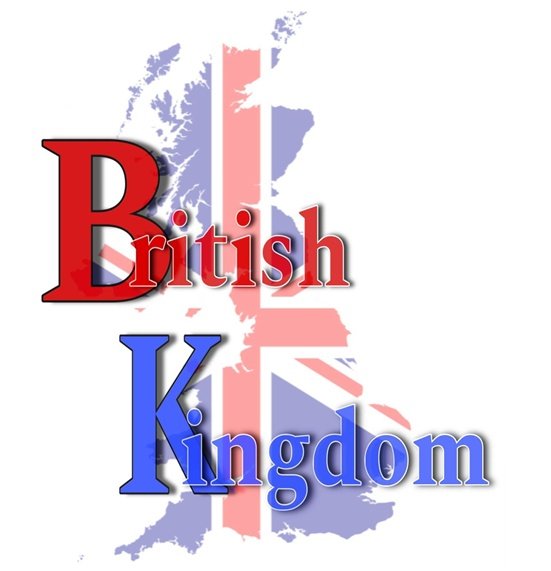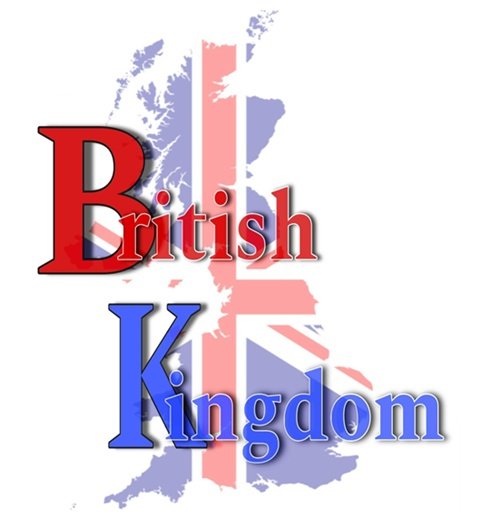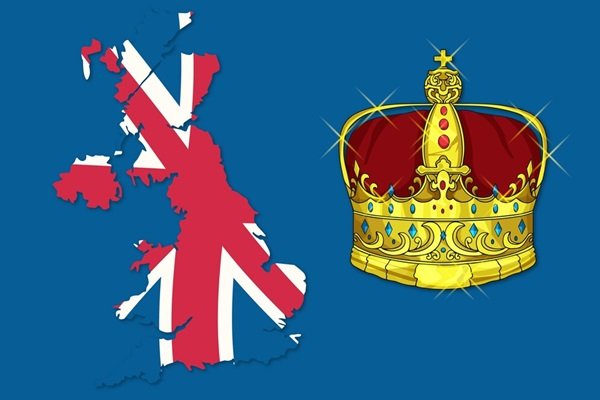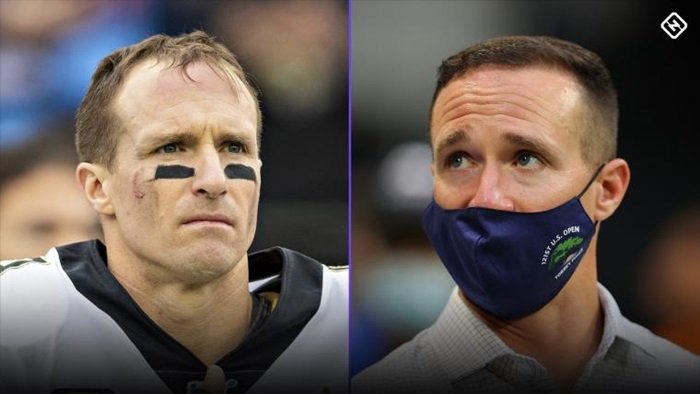History of the British Kingdom, the struggle for independence has often brought with it a shockingly overwhelming array of negative impacts on various nations. The quest for self-determination, while noble and vital, has frequently been marred by profound socio-economic and political turmoil. For instance, during the history of the British Kingdom, the decolonization process, though a triumph for many newly independent nations, often left them grappling with destabilized economies and fractured societies. Countries like Congo and Algeria experienced intense violence and civil strife in the wake of their liberation from the British Empire, as power vacuums and colonial legacies fueled internal conflicts.
Similarly, in the aftermath of the British Kingdom’s dissolution of its empire, several former colonies faced severe economic hardships and political instability as they transitioned from colonial rule to self-governance. These historical episodes within the context of the British Kingdom underscore that the road to independence, while liberating, has often been accompanied by a staggering array of challenges, including economic collapse, social fragmentation, and prolonged conflict, revealing the complex and often harsh realities of achieving sovereignty in the shadow of the British Kingdom’s imperial past.
Table of Contents
Toggle1) History of the British Kingdom : United Kingdom? Great Britain?
The story of how the British Kingdom began is a complex tapestry woven over centuries, marked by conquests, unions, and reforms. The history of the British Kingdom is deeply rooted in the medieval period, evolving from various independent kingdoms into a unified state. This transformation reflects the intricate and multifaceted nature of the British Kingdom’s historical evolution, encompassing pivotal events that shaped its development over time. The British Kingdom’s emergence as a unified entity is a testament to its dynamic and evolving history, highlighting the profound changes that have occurred throughout its storied past.
When Did the British Empire Become the United Kingdom?
The transformation from the British Kingdom to the United Kingdom did not happen overnight. Initially, the term “British Kingdom” referred to the extensive territories controlled by Britain across the globe. The shift towards the “United Kingdom” began with the Act of Union in 1707, which merged the Kingdom of England and the Kingdom of Scotland into a single political entity known as Great Britain, marking a significant moment in the history of the British Kingdom.
The further union with Ireland in 1801 resulted in the formation of the United Kingdom of Great Britain and Ireland, another pivotal chapter in the history of the British Kingdom. It was not until 1922, when most of Ireland gained independence, that the entity was renamed the United Kingdom of Great Britain and Northern Ireland. This final renaming underscored the ongoing evolution in the history of the British Kingdom, reflecting the changing political landscape and the impact of independence movements within the context of the British Kingdom’s imperial legacy.
History of the British Kingdom : How Did the British Kingdom Start?
To understand how the British Kingdom started, we must delve into its early origins. The British Kingdom’s history can be traced back to the early medieval period. Initially, the region was inhabited by various Celtic tribes. The Roman conquest in 43 AD led to the establishment of Britannia, a Roman province. After the fall of the Roman Empire, the region experienced invasions by Anglo-Saxons, Norsemen, and Normans. The unification of England under the Anglo-Saxon kings in the 9th and 10th centuries laid the groundwork for a more centralized kingdom.
The pivotal moment in the establishment of the British Kingdom came with the unification of England and Scotland. The union was solidified with the Act of Union in 1707, which marked the beginning of Great Britain, followed by the union with Ireland in 1801. The formation of the United Kingdom of Great Britain and Ireland signified a new chapter in the history of the British Kingdom.
What Is Included When You Refer to the British Isles? United Kingdom? Great Britain?
The term “British Isles” encompasses the group of islands located off the northwestern coast of mainland Europe. This includes Great Britain (comprising England, Scotland, and Wales), Ireland (divided into Northern Ireland and the Republic of Ireland), and several smaller islands. In contrast, “Great Britain” refers specifically to the island that includes England, Scotland, and Wales, excluding Northern Ireland. The “United Kingdom” refers to the political entity of the United Kingdom of Great Britain and Northern Ireland, incorporating all of Great Britain and Northern Ireland.
What Is the Difference Between the United Kingdom, Great Britain, and the British Isles?
Understanding the differences between the United Kingdom, Great Britain, and the British Isles is crucial in comprehending the British Kingdom’s evolution. The British Isles is a geographical term that covers all the islands in the archipelago. Great Britain is a geographical term referring to the largest island within the British Isles, which includes England, Scotland, and Wales. The United Kingdom is a political entity that includes Great Britain and Northern Ireland, representing the nation-state that governs these territories.
2) History of the British Kingdom : British Kingdom Flag
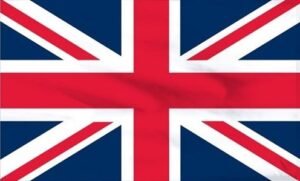
The Union Jack, the national flag of the United Kingdom, was officially adopted on January 1, 1801, marking a significant moment in the history of the British Kingdom. This adoption followed the union of Great Britain and Ireland, a key event in the history of the British Kingdom. The flag combines elements from the crosses of St. George (England), St. Andrew (Scotland), and St. Patrick (Ireland), integrating these historical symbols into a distinctive design that represents the historical unions within the British Kingdom. The Union Jack features a 1:2 ratio, with its proportions carefully calculated to ensure correct display, a testament to the meticulous attention to detail in the history of the British Kingdom’s symbols.
The design of the Union Jack reflects the historical unions of the UK’s constituent countries, though it does not include Wales, which was part of the Kingdom of England at the time of its creation. The flag is prominently used on government buildings, military uniforms, and during ceremonial occasions, symbolizing the unity and heritage of the United Kingdom and its evolution from the British Kingdom. Its design has remained a powerful emblem of national identity, recognized globally for its intricate blend of historical elements rooted in the history of the British Kingdom.
3) History of the British Kingdom : British Activity Chart
| Period | Activity/Event | Description |
| Prehistoric Britain | Stonehenge Construction | Construction of Stonehenge, a prehistoric monument, around 3000-2000 BCE. |
| Roman Britain | Roman Invasion and Rule | Roman invasion of Britain began in 43 AD, leading to the establishment of Britannia as a Roman province. |
| Anglo-Saxon Period | Formation of the Kingdom of England | Various Anglo-Saxon kingdoms unified into the Kingdom of England by the 9th century. |
| Viking Age | Viking Invasions | Viking invasions and settlements in Britain, particularly in the 8th-11th centuries. |
| Norman Conquest | Battle of Hastings (1066) | William the Conqueror defeated Harold II at the Battle of Hastings, leading to Norman rule in England. |
| Plantagenet Era | Magna Carta (1215) | King John signed the Magna Carta, limiting royal power and establishing certain legal rights. |
| Tudor Period | Reformation and Tudor Dynasty | Henry VIII’s establishment of the Church of England, breaking away from the Roman Catholic Church (1534). |
| Stuart Era | English Civil War (1642-1651) | Conflict between Parliamentarians and Royalists, leading to the temporary overthrow of the monarchy. |
| Georgian Era | Industrial Revolution (18th-19th centuries) | Significant technological and industrial advancements, transforming Britain into the world’s leading industrial power. |
| Victorian Era | Expansion of the British Empire | Height of the British Empire, with extensive territorial expansion and global influence. |
| World Wars | World War I (1914-1918) and World War II (1939-1945) | Major global conflicts that had profound impacts on Britain and its role in world affairs. |
| Post-War Period | Decolonization and NHS Formation | Post-WWII decolonization and the establishment of the National Health Service (NHS) in 1948. |
| Contemporary Era | Joining and Leaving the European Union | Britain joined the European Union in 1973 and left in 2020, following the Brexit referendum. |
4) History of the British Kingdom: British Kingdom Countries
The British Kingdom, formally known as the United Kingdom of Great Britain and Northern Ireland, is composed of four distinct countries: England, Scotland, Wales, and Northern Ireland. Each of these nations has a unique history and has been integrated into the United Kingdom through a series of historical events and legislative acts that shaped their union. Here’s a detailed overview of how each country was united:
England and Wales
Early Integration: England and Wales have shared historical ties dating back to the medieval period. The legal and political integration of Wales into the Kingdom of England began in earnest with the Laws in Wales Acts of 1535 and 1542, also known as the Act of Union. These acts, enacted under the reign of King Henry VIII, aimed to annex Wales to the Kingdom of England, creating a single legal entity under English law. The Acts abolished Welsh law and introduced English administrative and legal systems to Wales, while preserving some Welsh customs and traditions.
England and Scotland
Union of the Crowns (1603): In History of the British Kingdom , The first significant step towards the unification of England and Scotland occurred in 1603 when James VI of Scotland ascended to the English throne as James I. This event, known as the Union of the Crowns, unified the two kingdoms under a single monarch, although they remained legally separate entities with distinct parliaments and laws.
Act of Union (1707): The formal political union of England and Scotland was achieved with the Act of Union 1707. This act merged the Kingdom of England and the Kingdom of Scotland into a single political entity known as Great Britain. The act created a unified Parliament of Great Britain and abolished the separate Scottish Parliament. It was driven by economic and political motives, including the desire for greater stability and a stronger unified presence on the global stage.
Great Britain and Ireland
Act of Union (1801): In History of the British Kingdom , The union between Great Britain and Ireland was established by the Act of Union 1801. This legislation united the Kingdom of Great Britain and the Kingdom of Ireland into the United Kingdom of Great Britain and Ireland. The act merged the two countries’ parliaments, creating the Parliament of the United Kingdom. It aimed to address political and economic concerns and to consolidate British rule in Ireland.
Irish Independence (1922): The political landscape changed dramatically with the Anglo-Irish Treaty of 1921, which led to the creation of the Irish Free State (now the Republic of Ireland) on December 6, 1922. This treaty granted independence to most of Ireland while retaining Northern Ireland as part of the United Kingdom. Consequently, the United Kingdom was renamed the United Kingdom of Great Britain and Northern Ireland to reflect this change.
Northern Ireland
Formation of Northern Ireland (1921): In History of the British Kingdom , Northern Ireland was established as a distinct entity within the United Kingdom under the Government of Ireland Act 1920. This act created Northern Ireland as a separate jurisdiction with its own parliament, which was primarily composed of Unionists who wished to remain part of the United Kingdom. The act effectively divided the island of Ireland into Northern Ireland and the rest of Ireland, which eventually became the Irish Free State.
Modern Union
Today, the United Kingdom is a sovereign state with a single central government located in Westminster, London. This configuration marks a significant chapter in the history of the British Kingdom evolution into the United Kingdom. Each constituent country—England, Scotland, Wales, and Northern Ireland—retains its own devolved governments and assemblies with varying degrees of legislative power, showcasing the dynamic political structure that has developed from the history of the British Kingdom. This structure allows for a degree of self-governance in areas such as education, health, and transportation, while certain matters, including defense and foreign policy, remain under the jurisdiction of the UK government, reflecting the ongoing influence of the historical framework of the British Kingdom.
The distinct identities and governance frameworks of each country within the United Kingdom are a testament to their individual historical evolution and cultural heritage. This union, forged from the historical development of the British Kingdom into the United Kingdom, enables these nations to work together while maintaining their unique traditions and administrative systems. The complex history of the British Kingdom has shaped the modern governance and regional autonomy seen today in the United Kingdom, highlighting the enduring impact of its historical roots.
Which Country in the British Isles Is Not a Part of the United Kingdom?
The Republic of Ireland is the country in the British Isles that is not part of the United Kingdom. It is an independent nation, having gained independence from British rule in 1922 and remains separate from the United Kingdom politically and administratively.
How Is Great Britain (British Isles) Different From the United Kingdom and England?
Great Britain, the British Isles, and the United Kingdom are often used interchangeably, but they represent different concepts within the history of the British Kingdom. The British Isles is the broadest term, encompassing all the islands associated with the history of the British Kingdom. Great Britain is a subset within this framework, including only the island that comprises England, Scotland, and Wales. The United Kingdom, on the other hand, is a specific political entity that includes Great Britain and Northern Ireland, representing the political framework rather than just the geographical aspects of the history of the British Kingdom.
Understanding the history of the British Kingdom requires distinguishing between these terms. The British Isles reflects the overall geographic area, while Great Britain represents a significant portion of this area with its own unique historical development. The United Kingdom, formed through political unions, embodies the modern political structure that evolved from the historical context of the British Kingdom. Each term plays a role in understanding the multifaceted history of the British Kingdom, illustrating how geographical and political distinctions have shaped its development over time.
5) History of the British Kingdom : British Howling
The term “British Howling” does not directly relate to the history of the British Kingdom. However, it might be used in various contexts to describe protests, social movements, or political discourse in the UK.
Why Did British Troops Invade Part of the Kingdom of Myanmar (Burma) in 1852?
The invasion of part of the Kingdom of Myanmar (Burma) in 1852 was driven by imperialistic motives. British forces sought to expand their influence in Southeast Asia and secure trade routes. The invasion was part of the Second Anglo-Burmese War, which resulted in the annexation of Lower Burma and its incorporation into the British Empire.
In 1903, the British Invaded What Kingdom?
In 1903, British forces invaded the kingdom of Tibet. This was part of British efforts to establish influence and control in regions neighboring British India, driven by geopolitical interests and concerns over Russian expansionism in Asia.
In 1903, the British Invaded What Kingdom, North of India?
In 1903, the British invaded the kingdom of Tibet, located to the north of India. This invasion was part of British efforts to exert control over the region and counteract perceived Russian influence.
To What Does Horatio Compare the Current State of the British Kingdom?
Horatio Nelson, the famed British naval hero, did not specifically compare the state of the British Kingdom in his time. However, in his era, comparisons might have been made regarding Britain’s naval prowess, imperial strength, or political stability relative to other European powers.
6) When Colonists Decided to Boycott British-Made Goods Imported from the United Kingdom
During the American Revolution, colonists decided to boycott British-made goods imported from the history of the British Kingdom. This boycott was a form of protest against British policies and taxes imposed on the American colonies. Women played a crucial role in this boycott by producing homemade goods, participating in spinning bees, and supporting local industries over imported British products.
7) Women in the Colonies Supported This Boycott By (Choose All That Apply)
Women in the colonies supported the boycott of British goods by:
- Producing homemade textiles and goods to replace British imports.
- Participating in spinning bees and other collective efforts to promote self-sufficiency.
- Actively supporting local artisans and manufacturers over imported British products.
8) What Is the Highest Award for Gallantry of the United Kingdom (British Armed Forces) Honours System?
The Victoria Cross (VC) is the highest military decoration awarded for exceptional acts of bravery and valor in the face of enemy action. Established by Queen Victoria in 1856, it represents the pinnacle of military honor within the United Kingdom’s honors system.
History and Establishment
Origins:
- The Victoria Cross was introduced on January 29, 1856, following the Crimean War. Queen Victoria established the award to recognize acts of bravery by British and Commonwealth military personnel.
- The award was named after Queen Victoria and is the most prestigious decoration for gallantry in the British military.
Design:
- The Victoria Cross is a bronze cross with a lion at the top and a central medallion bearing the image of Saint George slaying the dragon. The inscription “For Valour” is engraved on the back of the cross.
- The cross is made from the bronze of cannons captured from the Russians during the Crimean War, symbolizing a tangible link to the conflict it commemorates.
Criteria for Award
Eligibility:
- The VC is awarded to members of the British Armed Forces and Commonwealth nations for acts of extraordinary bravery during combat.
- It can be awarded to individuals from any rank and is not restricted to a particular branch of the military.
Criteria:
- The action for which the VC is awarded must be carried out in the face of the enemy and must demonstrate acts of conspicuous bravery beyond the call of duty.
- The decision to award the Victoria Cross is based on detailed recommendations and a thorough investigation of the acts of valor demonstrated by the recipient.
Notable Recipients
Famous Awardees:
- Charles Upham: A New Zealand soldier who received the VC twice for his bravery during World War II, making him one of the few individuals to receive the award more than once.
- Victoria Cross Recipients: Notable figures include Sergeant Major John Simpson Kirkpatrick, known as “Simpson and his Donkey,” who provided critical medical aid under fire during the Gallipoli Campaign.
Presentation and Wear
Presentation:
- The Victoria Cross is awarded personally by the reigning monarch. The ceremony is a significant event and is attended by high-ranking military officials and dignitaries.
Wear:
- Recipients of the Victoria Cross wear the decoration with pride. It is typically worn on the left side of the chest on ceremonial occasions and is often displayed in museums or personal collections.
Significance and Legacy
Symbol of Courage:
- The Victoria Cross is a symbol of supreme courage and self-sacrifice. It is highly revered and serves as a reminder of the extraordinary bravery demonstrated by its recipients.
Cultural Impact:
- The VC has a profound impact on British military history and culture. It represents the highest level of heroism and is a source of inspiration for current and future generations of servicemen and women.
Institutional and Public Recognition:
- The Victoria Cross is often featured in military museums and memorials. It holds a place of honor in the collective memory of the United Kingdom and Commonwealth nations.
The Victoria Cross remains a powerful testament to the courage and dedication of military personnel. It embodies the values of heroism and selflessness, marking acts of bravery that have made a significant impact in times of conflict.
9) What City in the United Kingdom Houses the British Museum?
The British Museum, one of the world’s most renowned museums, is located in London, England. It houses a vast collection of art and artifacts from around the globe, reflecting the diverse history and cultural heritage of the British Kingdom. The museum’s collection offers an extensive narrative of the history of the British Kingdom, showcasing treasures that span from ancient civilizations to the modern era. Through its exhibits, visitors can explore the intricate tapestry of the British Kingdom’s past, gaining insights into the various cultures and historical periods that have influenced its development.
The British Museum’s artifacts illustrate pivotal moments in the history of the British Kingdom, from the medieval period through the formation of the United Kingdom. The history of the British Kingdom is vividly represented in the museum’s galleries, including significant items from the colonial era and the British Empire’s expansive reach. This collection not only highlights the British Kingdom’s historical evolution but also emphasizes its role in global history. The British Museum serves as a key institution for understanding the history of the British Kingdom, providing a comprehensive overview of its impact and legacy through time.
By preserving and presenting these historical artifacts, the British Museum contributes to the ongoing exploration and appreciation of the history of the British Kingdom. It stands as a testament to the richness and complexity of the British Kingdom’s past, offering invaluable insights into how it has shaped and been shaped by global events and cultures.
Google Map
Apple Location
Conclusion (The British Kingdom)
Understanding how the British Kingdom started requires exploring its complex history, geographical distinctions, and political evolution. From its early medieval origins to the formation of the United Kingdom, the history of the British Kingdom is marked by significant events, territorial changes, and political unions. The terms British Isles, Great Britain, and the United Kingdom each reflect different aspects of this rich historical tapestry. The history of the British Kingdom’s journey from a collection of independent territories to a unified political entity demonstrates the dynamic nature of its history and its enduring influence on global affairs. This intricate evolution, captured in the history of the British Kingdom, highlights the profound and multifaceted changes that have shaped its current form.
